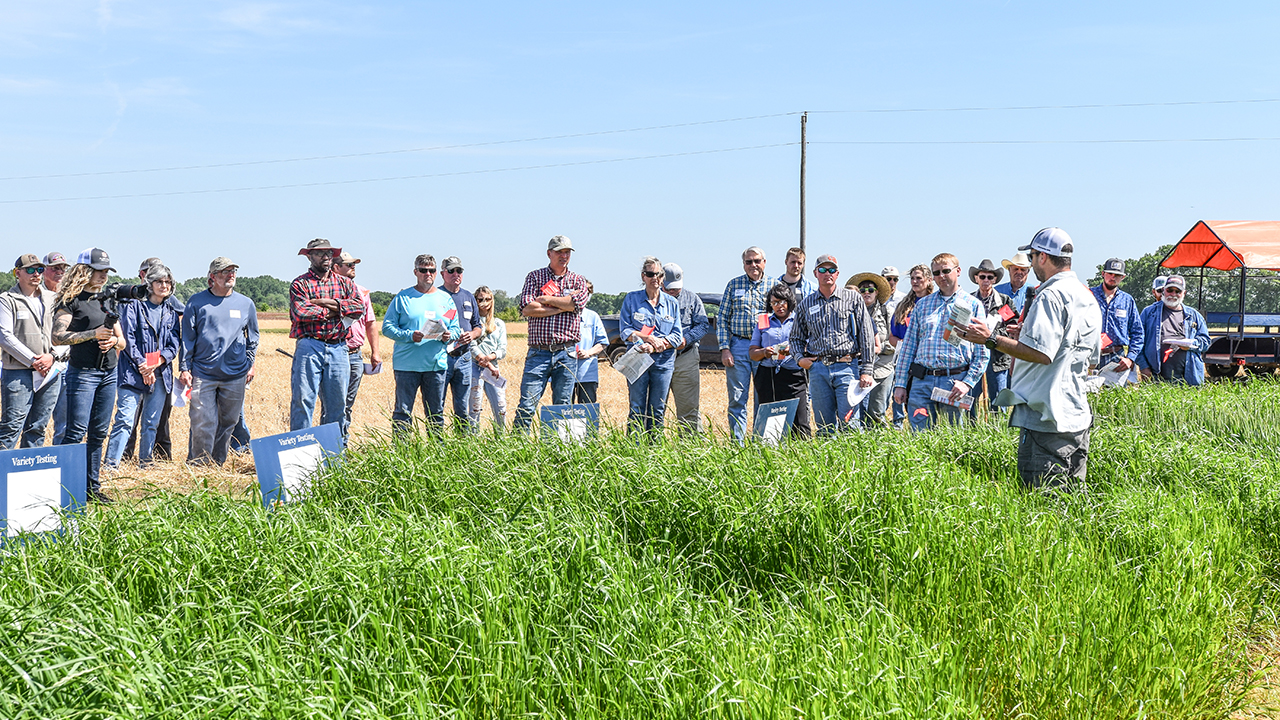Auburn University
Variety Testing Program

Variety selection is the most important decision a farmer can make. If farmers want to be successful, they must ensure that they plant varieties that are well adapted. If a farmer selects the wrong variety, the results can be catastrophic. Typically, farmers do not have the resources to conduct variety trials in addition to their normal growing season activities.
Variety evaluation is also critical to plant breeders, both from universities and industry. Prior to releasing a new variety, these breeders typically evaluate their lines in independent variety trials. This ensures that they have unbiased data from multiple years and locations to support the release of their new variety.
The mission of the Auburn University Variety Testing Program is to provide research-based, unbiased results on the performance of various crop hybrids, cultivars, and varieties to the agricultural community in Alabama. We are intent on conducting these trials in a manner that will result in maximum biological yield through methods common to the top-producing farms in Alabama.
We are committed to providing this information in a timely manner for its use during the decision-making process. The success of the program rests on our ability to help Alabama producers provide a safe, dependable source of food and fiber for all families as well as an economic sustainability for theirs.

Henry Jordan
Variety Testing Manager, Research Associate IV
Subscribe to AU Variety Testing Updates
Annually, the Auburn University Variety Testing Program conducts trials on corn, cotton, soybeans, peanuts, grain sorghum, wheat, barley, oats, triticale, small grain forages, and ryegrass.
Trials are conducted on Auburn University owned and operated agricultural research stations across the major geographical regions of the state. The research conducted at each of these locations can provide stakeholders with data that can be more representative of their growing conditions.
Experiments with corn 1896
BY J. F. DUGGAR.SUMMARY.I. The spring and early summer of 1896 were extremely dry. II. Among fourteen varieties of corn tested, the largest yield was made by St. Charles, followed by Early Mastodon and Blount Prolific. Averaging many tests of varieties made in...
Experiments with cotton 1896
BY J. F. DUGGAR.SUMMARY.I. Of seventeen varieties of cotton tested in 1896, Hutchinson ranked first in yield and value of lint and value of total product. Truitt stood second, Dickson Cluster third, and Peerless fourth.II. Seed from different parts of the Cotton Belt...
Corn and cotton 1894
.ALEX. J. BONDURANT. CORN.VARIETY EXPERIMENT.Object of this experiment was to ascertain the best yielding variety. Corn was planted on plots 1-14 of an acre in size-rows 5 feet wide and corn dropped 3 feet apart in drill
Cotton experiments 1893
A. J. BONDJRANT, Agriculturist.JAMES CLAYTON, Assistant. COMPARISON OF VARIETIES.This experiment consists of a comparison between thirty (30) varieties of cotton.
Corn and cotton 1893
ALEX. J. BONDURA NT, AGRICULTURIST.I. Varieties of Corn..................................3II. Object of Experiment............................... 3HII. Intercultural Experiments with Fertilizers on Cotton. 4TV. A Comparison of Varieties of Cotton................. 5
Cotton 1892
VARIETIES.Table No.1 gives tbe yield of the varieties in seed cotton, lint, and tbe per cent. of lint for 1890 and 189l.
